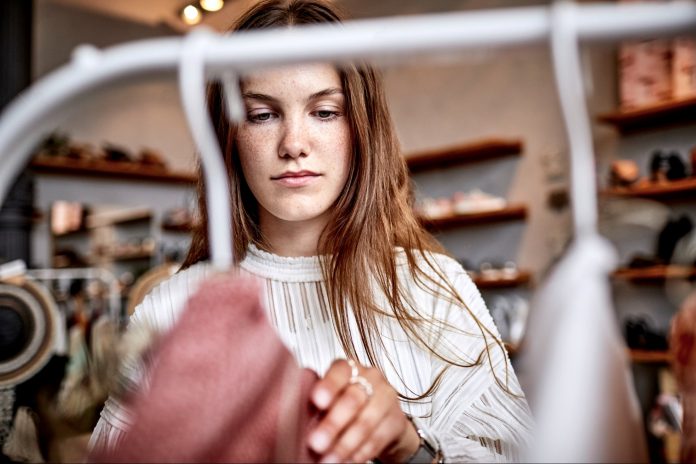Opinions expressed by Entrepreneur contributors are their own.
There are countless ways to tell of the toll that inflation has taken on shoppers (and on retailers, by extension). While consumer spending for services increased in February 2022, spending on goods declined. 72% of American shoppers are spending less because of inflation.
Though you might think it’s based on the year’s positive early returns, retailers must buckle down now to ensure that they will survive a likely inflation-related cooling-off period. Even before recent acceleration, the Consumer Price Index (CPI) was rising at unprecedented rates. Shoppers have only so much money to spend, and retail‘s reality will catch up with these trends — if the effects haven’t struck your organization already.
We published our State of Consumer Behavior 2022 report precisely for times like these. I’’s pivotal that retailers and consumers are on the same page, as both parties’ wellbeing depends on it. With our report, we pinpoint several insights that can help retailers better serve customers and position their organizations for long-term success regardless of economic conditions. Among other discoveries, we found that consumers are in greater need of stellar in-store experiences than ever before. Continue below to see what we found:
Finding #1: Positive in-store experiences are the key to brand loyalty
It’s important to highlight just how important in-store experiences have become. As many retailers know, brand loyalty seems more like a pipe dream than a realistic possibility today. Retailers routinely spend exorbitant sums on elaborate customer loyalty initiatives. Yet, we found that 29% of shoppers are changing brands today more often than ever before.
It turns out, providing consistently great in-store experiences is the clearest path to retaining your customers. 55% of shoppers have changed brands after a single poor in-store experience. Conversely, 83% of shoppers are likely to return to your store after having a good in-store experience. The data couldn’t be any clearer: In-store experiences have a direct impact on your brand’s bottom line.
Related: The 6 Essential In-Store Experiences That Your Customers Want to See
Finding #2: Product selection and customer service define the in-store experience
Products and service are fundamental elements of the in-store experience — this is no secret to retailers born before yesterday. Yet, organizations may lose sight of just how highly the typical customer values product variety and customer service.
According to our findings, 31.9% of shoppers judge an in-store experience most by the variety and availability of products displayed in a store. 26.4% of shoppers find that the quality of customer service most defines the in-store experience.
Supply chain shortages have forced retailers to get clever in how they acquire, stock and display items. Strong inventory management systems have never been more important. Additionally, McKinsey recommends purchasing and stocking the most in-demand items in the highest quantities, while trying to cut out third parties in the supply chain to the degree that you can.
Some retailers may also fail to realize just how highly customers value great service. Some may also fail to realize how large the gap is between brands that make customer service a priority and those that miss the mark.
Brands like Tommy Bahama, Brighton, Nordstrom, WaWa, and Bath & Body Works have left a memorable impression on service-attentive shoppers. Clearly, these brands have inspired their employees to prioritize the customer and have positioned those employees for success.
WaWa is a good example of how technology can further a shopper’s perception of positive customer service. Ordering from WaWa’s beloved fresh food markets is a highly automated process, with shoppers able to curate their orders through touch screens or on the WaWa app. This allows employees to focus on the most important part: making the food consistent with the customer’s specifications.
Many retail brands are ripe for such automation. Because customers value service so highly, making self-service options available could provide the boost that your brand seeks.
Related: How Customer Experience is Defining the Success of any Business
Finding #3: Compelling in-store experiences are attractive to new customers
When we asked customers what would lead them to try a new store, 21.7% said that “experiences aimed at generating fun” would persuade them. The only response more popular than this was “offering exclusive in-store discounts.”
Pennsylvania-based apparel brand, United By Blue, has set itself apart by installing cafes in its stores, offering local fare that is consistent with the brand’s image of clean living. By providing shoppers the chance to grab a beverage or an entire meal during their shopping trip— or even independent of shopping — United By Blue imbues a casual vibe that says “stay a while.”
While you might not consider a cafe to be the most exciting in-store experience, it is more than enough to win over new customers who appreciate such touches. Given a similar product selection, would you as a shopper choose to shop at the store that offers a delicious slider or coffee, or one that does not?
This is just one example of many ways that you can think outside the box to attract new, loyal business to your stores.
As consumer tastes change, much remains the same. Shoppers still want what they’ve always wanted: fair prices, associates to answer their questions and lead them to quality items, and exciting new experiences. The way retailers deliver on these wishes, though, has certainly changed.
Brands have ventured further outside the box, offering daring experiences and embracing new technologies to provide the service and positive experiences that customers desire. With self-service kiosks and other tools taking the load off of employees, employers can assign their workers to new, exciting features of their store — like the cafe, for example.
Organizations that continue to blend the latest technology with innovative service and marketing approaches have a great chance to ride out even the toughest of economic times.
Related: Let’s Get Personal: Using Technology to Improve In-Store Customer Experience

